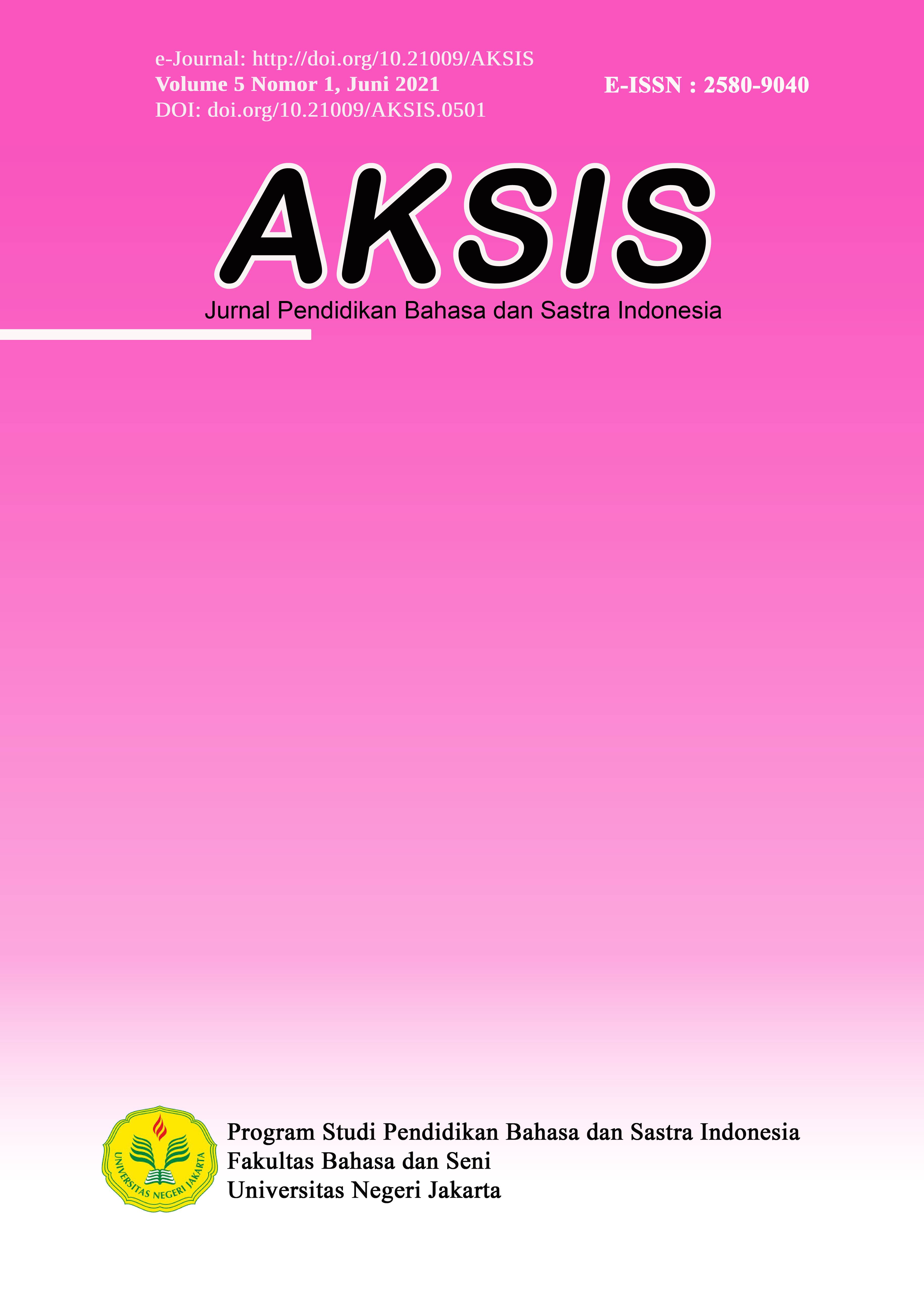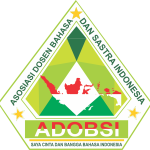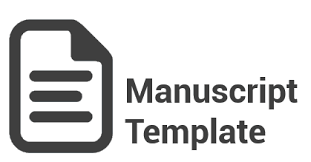Synthesis Skills and Student Thinking Patterns in Scientific Writing
Abstract
Clutter in thinking is the basis for innovation and creation. Coherent thinking can be realized if one's knowledge base is properly constructed and harmonious. To hone this, universities exist through their demands of students by requiring scientific writing products to be graduated. The problem is, do students have a tendency to think coherently in writing scientific papers? To find out, this study comes with the aim of exploring and describing the synthesis ability and thinking patterns of Jambi University students from the introduction of the approved thesis proposal. Synthesis and thinking patterns are considered two aspects that support systematic thinking in the activity of creating new knowledge. That way, this research is qualitative descriptive with snow ball sampling. Then, it was analyzed by referring to the model of Miles and Huberman. The results showed 1) 27.9% (the highest number) of paragraphs contained one reference, 2) 70% found the essence of each argument that supports the main idea, 3) on average, arguments were found in the form of examples, illustrations or supporting data, 4) 75% of students functioned the counter arguments, 5) on average the students had explained and confirmed their position in research, 6) there were 16 transitional words between sentences and 1 transition word between sentences that were used, and 7) Students showed a tendency to use deductive thinking patterns (causality, for example , enumeration, process, and contrast) in deciphering the arguments.
Keywords: scientific writing, synthesis skills, thinking patterns
Abstrak
Keruntutan dalam berpikir menjadi dasar munculnya inovasi dan kreasi. Berpikir secara runtut dapat diwujudkan bila basis pengetahuan seseorang terkonstruksi dengan tepat juga harmonis. Untuk mengasah hal itu, perguruan tinggi hadir melalui tuntutannya kepada mahasaiswa dengan mempersyaratkan produk karya tulis ilmiah sebagai kelulusan. Persoalannya, apakah mahasiswa telah memiliki kecenderungan berpikir runtut dalam menulis karya ilmiah? Untuk mengetahuinya, penelitian ini hadir dengan tujuan mengeksplorasi dan mendeskripsikan kemampuan sintesis dan pola berpikir mahasiswa Universitas Jambi dari bagian pendahuluan proposal skripsi yang telah disetujui. Sintesis dan pola berpikir dianggap dua aspek penyokong kesistematisan berpikir dalam aktivitas penciptaan pengetahuan baru. Dengan begitu, penelitian ini bersifat kualitatif deskriptif dengan pengambilan data secara snow ball sampling. Kemudian, dianalisis dengan merujuk model Miles dan Huberman. Hasil penelitian menunjukkan 1) 27,9 % (jumlah terbanyak) paragraf mengandung satu referensi, 2) 70% ditemukan intisari setiap argumen yang sudah mendukung gagasan utama, 3) rata-rata telah ditemukan argumen berupa contoh, ilustrasi atau data pendukung, 4) 75 % mahasiswa memfungsikan kontra argumen, 5) rata-rata mahasiswa telah memaparkan dan menegaskan posisinya dalam penelitan, 6) ada 16 kata transisi antarkalimat dan 1 kata transisi antarpargraf yang difungsikan, dan 7) Mahasiswa menunjukkan kecenderungan menggunakan pola berpikir deduktif (kausalitas, contoh, enumerasi, proses, dan kontras) dalam menguraikan argumennya.
Kata kunci: karya tulis ilmiah, keterampilan sintesis, pola berpikir
References
Azzouz, B. (2009). A Discourse Analysis of Grammatical Cohesion in Student’s Writing. Mentouri University Constantine, Algeria.
Damaianti, V. S., Abidin, Y., & Rahma, R. (2020). Higher Order Thinking Skills-Based Reading Literacy Assessment Instrument: An Indonesian Context. Indonesian Journal of Applied Linguistics, 10(2), 513–525.
Hayes, B. K., & Heit, E. (2018). Inductive Reasoning 2.0. Wiley Interdisciplinary Reviews: Cognitive Science, 9(3). https://doi.org/https://doi.org/10.1002/wcs.1459
Kashyap, N. (2016). John Paul Minda, The Psychology of Thinking: Reasoning, Decision-Making, and Problem-Solving. Psychology Learning and Teaching, 15(3). https://doi.org/https://doi.org/10.1177/1475725716661121
Kendal, S. (2015). How to Write A Research Paper. Bookbon.
Klauer, K. J., & Phye, G. D. (2008). Inductive Reasoning: A Training Approach. Review of Educational Research, 78(1), 85–123.
Levy, Y., & Ellis, T. J. (2006). A Systems Approach to Conduct an Effective Literature Review in Support of Information Systems Research. Informing Science: The International Journal of an Emerging Transdiscipline, 9, 181–212. https://doi.org/https://doi.org/10.28945/479
Mujianto, G. (2019). Piranti Kohesi dalam Wacana Tulis Guru SMA/SMK Muhammadiyah Kabupaten Malang. KEMBARA: Journal of Scientific Language Literature and Teaching, 3(2), 210–233.
Okoli, C. (2015). A Guide to Conducting a Standalone Systematic Literature Review. Communications of the Association for Information Systems, 37(1), 43.
Rastuti, H. P. (2018). Preposisi & Konjungsi. Intan Pariwara.
Rochma, A. F., Triastuti, A., & Ashadi, A. (2020). Rhetorical Styles of Introduction in English Language Teaching (ELT) Research Articles. Indonesian Journal of Applied Linguistics, 10(2), 304–314.
Schryen, G. (2015). Writing Qualitative is Literature Reviews—Guidelines for Synthesis, Interpretation, and Guidance of Research. Communications of the Association for Information Systems, 37(1), 12–21.
Sugiyono. (2016). Metode Penelitian Pendidikan: Pendekatan Kuantitatif, Kualitatif, dan R&D. Alfabeta.
Syaefullah, A. (2015). Prinsip Dasar Penyusunan dan Penulisan Karya Tulis Ilmiah. Gramedia Pustaka Utama.
Winarto, Y. T., & Suhardiyanto, T. (2016). Karya Tulis Ilmiah Sosial: Menyiapkan, Menulis, dan Mencermatinya (E. M. Choesin (ed.)). Pustaka Obor Indonesia.






